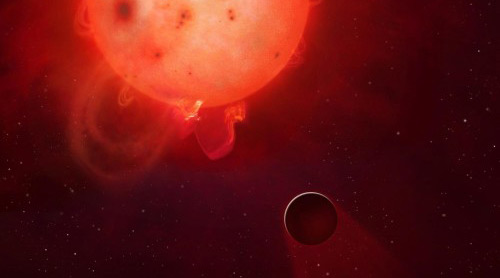Space X to start flying humans in 2017
SpaceX has become the first of the new private spaceflight companies to be contracted by NASA to fly astronauts to the International Space Station. “Commercial crew launches are really important for helping us meet the demand for research on the space station because it allows us to increase the crew to seven,” said Julie Robinson, International Space Station chief scientist. “Over the long term, it also sets the foundation for scientific access to future commercial research platforms in low- Earth orbit."
 |
| Above: CGI artwork of SpaceX's manned Dragon capsule. courtesy of SpaceX. |
Next Mars rover may get flying companion
NASA may have plans for the Mars 2020 rover to use a small flying scout. A scouting drone could help the Mars 2020 rover avoid the sort of mission-ending misstep that got the smaller Spirit rover — the twin of the still-operational Opportunity rover — stuck in martian sand in 200.
“By March of next year — we’re actually building a full-scale helicopter, 1 kilogram size — we’re going to put it in a chamber and simulate, exactly, the Mars atmosphere. We have done some tests and we’re confident it will [fly],” JPL Director Charles Elachi said
 |
| Above: Artists impression of the Mars drone. Courtesy of JPL. |
Space weather threatens equatorial power grids:
Although the effects of space weather on the power grids of more northerly countries are well understood, it's less well known how severely they can damage the infra structure of equatorial countries and these new results suggest they may be more damaging that previously thought.
Space storms may have made a hospitable planet uninhabitable:
Massive versions of the coronal mass ejections thrown out by our Sun may be thrown out by the star of one of the most Earth-like exoplanets ever identified, rendering it uninhabitable.
 |
| Above: An artists impression of the poor little planet getting toasted. |
Impossibly ancient galaxies
Some of the most ancient giant galaxies ever discovered have astronomers baffled - they're from such an early time in the universe that they have no shape, yet have grown to massive size by some unknown mechanism.
Relativity video earns $400,000:
Ryan Chester, a teenager from North Royalton in Ohio, submitted his video for the Breakthrough Junior Challenge, winning $250,000 of which will go towards a scholarship, $50,000 to his teacher Richard Nestoff and $100,000 for his school to fund a science lab.
Above: Ryan Chester's prize winning video.
No comments:
Post a Comment